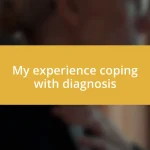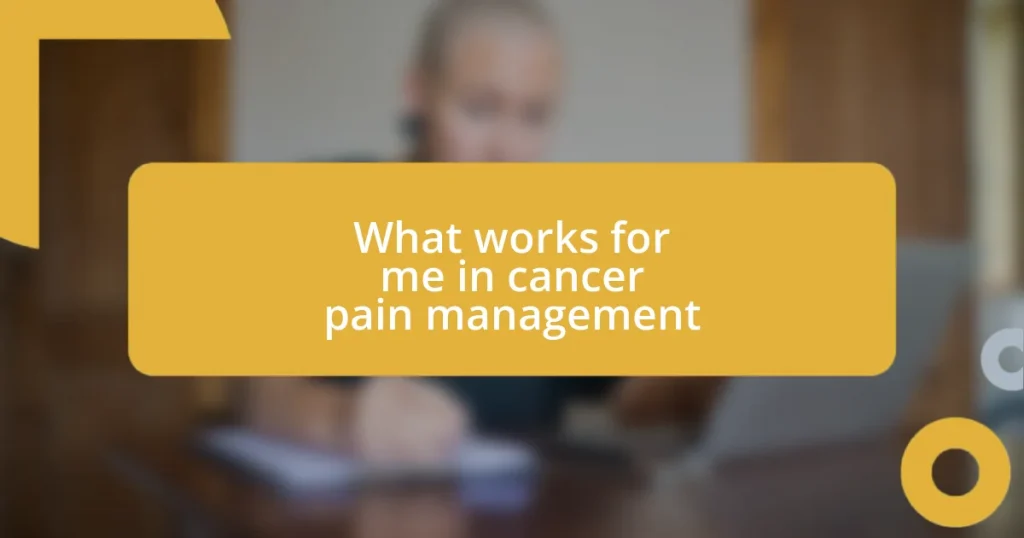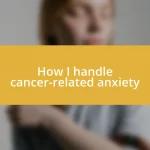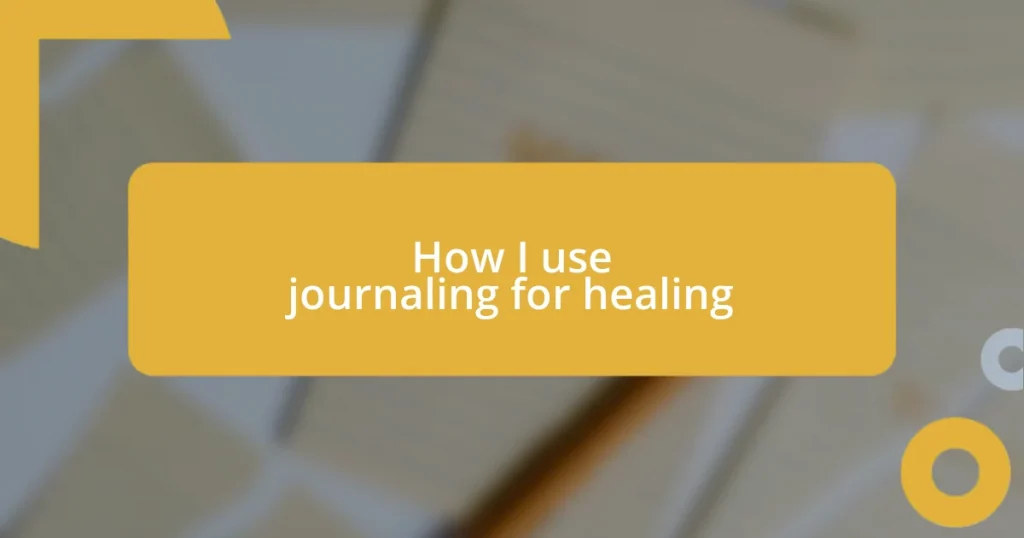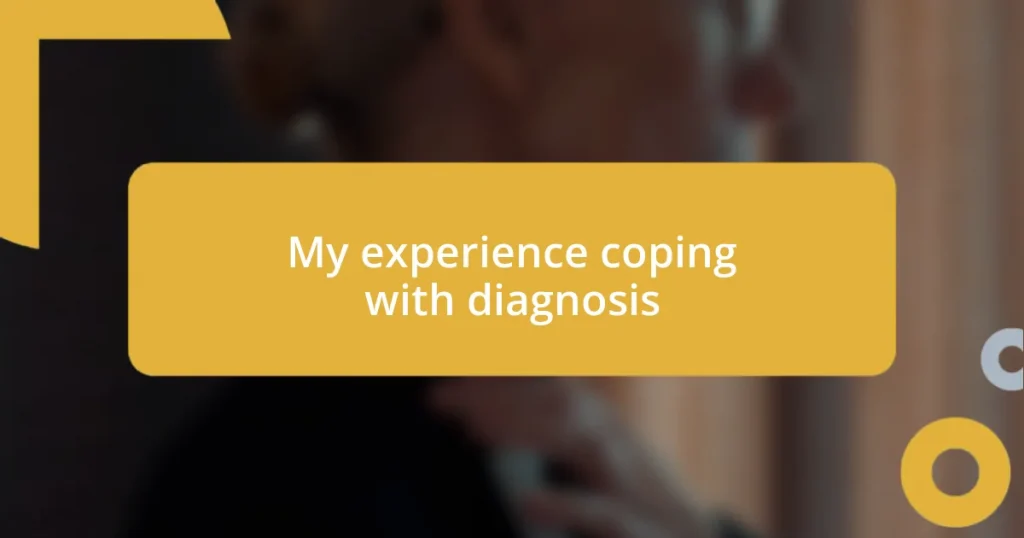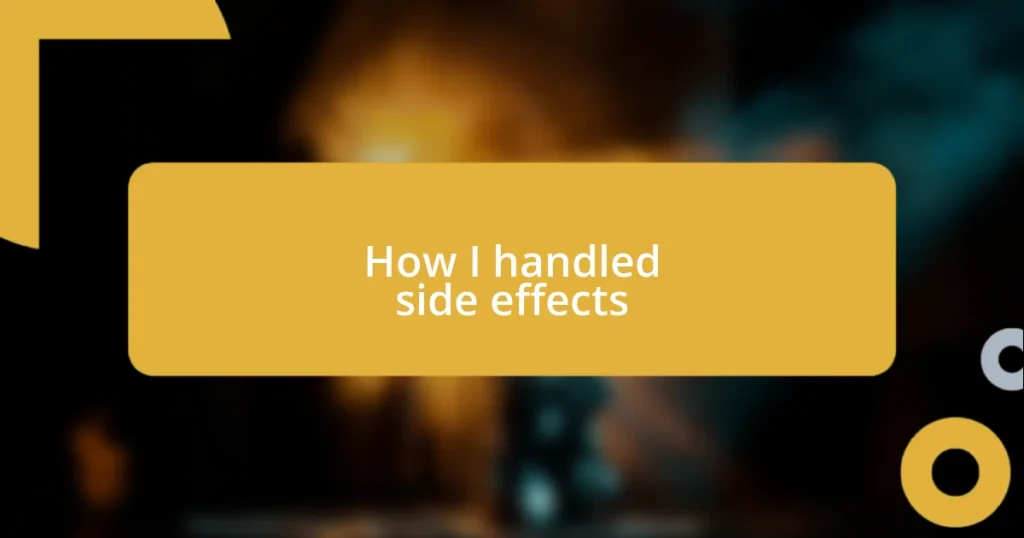Key takeaways:
- Cancer pain management involves a holistic approach that combines medications, emotional support, and lifestyle adjustments for effective relief.
- Identifying specific types of cancer pain—nociceptive, neuropathic, bone, visceral, and referred pain—is essential for personalized treatment and effective communication with healthcare providers.
- Complementary therapies like acupuncture, massage, mindfulness, and lifestyle changes significantly enhance overall well-being and pain management during cancer treatment.
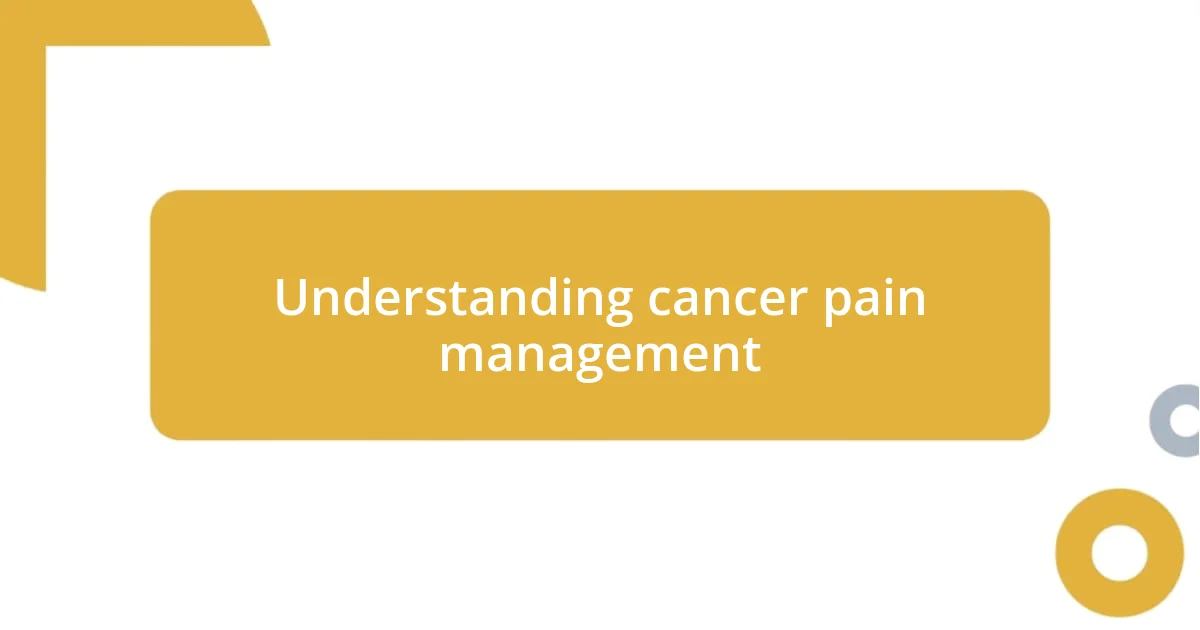
Understanding cancer pain management
Cancer pain management is a multifaceted approach that often combines medications, physical therapies, and emotional support. I remember when a close friend of mine underwent treatment; she felt overwhelmed by the variety of options available. How do you know which one will work best for you? It’s essential to discuss openly with healthcare providers, as tailoring a plan to individual needs can provide both physical relief and a sense of control during a challenging time.
From my experience, the journey through cancer pain often requires patience and persistence. For instance, I noticed that while prescription opioids provided short-term relief, integrating mindfulness techniques and gentle exercise into her routine led to lasting benefits. Isn’t it fascinating how the mind and body can work together to alleviate pain? Listening to your body’s signals is crucial in finding the right balance.
Many overlook the emotional component of cancer pain management. During the process, my friend found solace in talking to a therapist who specialized in cancer care. Isn’t it vital to address not just the physical pain but also the emotional burden? Embracing a holistic approach—where mental health is as much a priority as physical discomfort—can pave the way for more comprehensive relief and an improved quality of life.
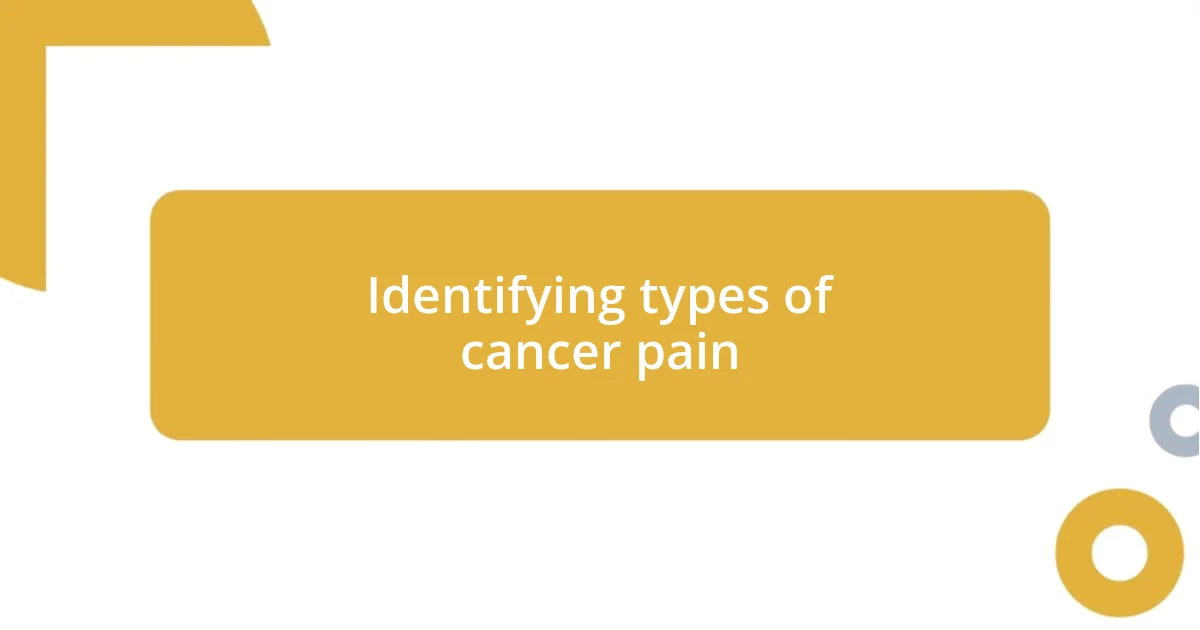
Identifying types of cancer pain
Identifying the specific types of cancer pain is crucial for managing and treating it effectively. Pain can manifest in various forms, each stemming from different causes. In my own encounters, I’ve learned to recognize that while some pain is related directly to the cancer itself—like the sharp aches from tumor pressure—other types, such as neuropathic pain, may arise from nerve damage caused by treatment. Identifying these types is not a mere academic exercise; it’s a pathway to finding the right relief.
Here’s a quick rundown of the common types of cancer pain:
- Nociceptive Pain: This pain results from tissue damage, often felt as a sharp or aching sensation.
- Neuropathic Pain: Caused by nerve damage, this can feel like burning, tingling, or shooting pains.
- Bone Pain: Frequently experienced if cancer has spread to the bones, often described as a deep, dull ache.
- Visceral Pain: Arising from internal organs, this type can be vague or cramp-like.
- Referred Pain: This occurs when pain is perceived in an area different from where it originates, such as shoulder pain from a diaphragm issue.
When I reflect on my experiences with different types of pain, I always find it helpful to keep a personal journal. Jotting down the nature and intensity of my pain not only provided clarity but helped me communicate more effectively with my healthcare team. This simple act of tracking allowed me to identify patterns, leading to better-targeted interventions. It’s these nuances that make pain management so personalized and vital—a journey I believe everyone navigating cancer deserves to undertake.
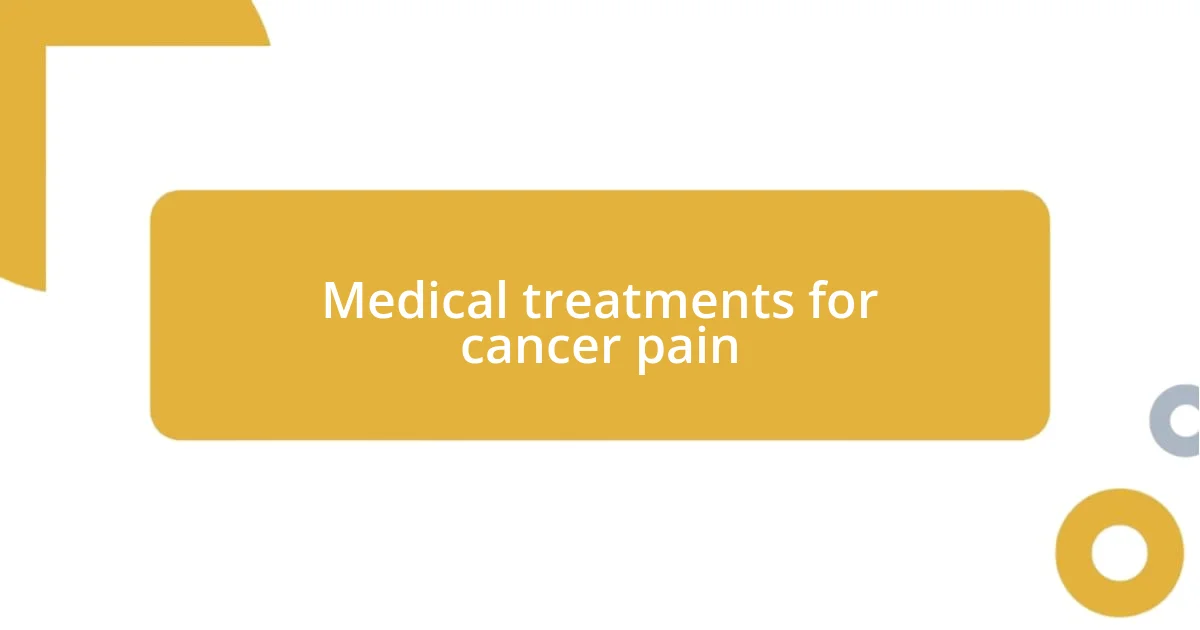
Medical treatments for cancer pain
Medical treatments for cancer pain are diverse and tailored to meet individual needs. From my experience, medications often begin with non-opioid analgesics, such as acetaminophen or NSAIDs, and progress to stronger options like opioids when necessary. I vividly remember discussing options with my friend; she was hesitant to consider opioids due to their potential side effects. Yet, guided by her doctor’s expertise, she found they were instrumental in regaining control over her daily life.
It’s crucial to understand how each treatment option interacts with the body. Opioids, while effective for severe pain, can lead to dependency if not managed carefully, so regular follow-ups are essential. In one memorable conversation, my friend shared her concerns about these risks. We talked about combining medications with complementary strategies—like cognitive-behavioral therapy and acupuncture—which can enhance overall comfort. This holistic view opened new avenues for alleviating pain without over-reliance on pharmaceuticals and helped her feel more empowered in her treatment decisions.
A multi-disciplinary approach often yields the best results. In my experience, working closely with a pain specialist, oncologist, and therapist brought a sense of community to her treatment. It reminded me of the significance of communication in this journey. When her pharmacist suggested a tailored medication schedule, it provided not just relief but also hope. It’s comforting to know that, through collaborative efforts, patients can find effective paths to managing cancer pain.
| Type of Treatment | Description |
|---|---|
| Non-Opioid Analgesics | Commonly used for mild to moderate pain; includes acetaminophen and NSAIDs. |
| Opioids | Effective for severe pain; includes morphine and oxycodone; requires careful management due to dependency risks. |
| Adjuvant Medications | Medications used for other conditions, like antidepressants or anticonvulsants, can help with specific pain types. |
| Interventional Procedures | Involves injections or nerve blocks to directly alleviate pain; may be effective for localized pain. |
| Complementary Therapies | Includes acupuncture, massage, and relaxation techniques; can enhance comfort and quality of life. |
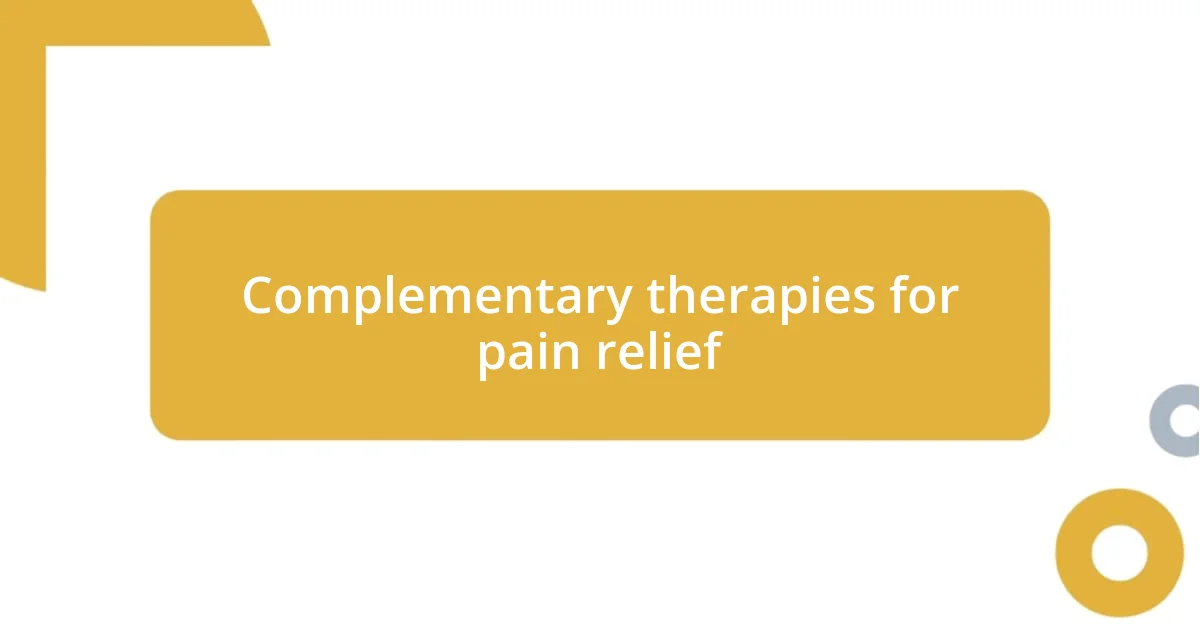
Complementary therapies for pain relief
Complementary therapies have a special place in pain management during cancer treatment. I’ve found that practices like acupuncture can be incredibly effective. For instance, after a particularly tough chemotherapy session, I decided to give acupuncture a try. The gentle needle placements surprisingly eased my discomfort and provided a much-needed sense of relaxation—something I hadn’t anticipated at all. Isn’t it fascinating how something so simple can have such profound effects?
Another complementary approach I discovered is massage therapy. I wasn’t initially open to it; I worried it wouldn’t suit my sensitive state. But after a friend’s encouragement, I visited a trained massage therapist who specialized in oncology. The experience was transformative—each session helped relieve not only physical tension but also emotional stress. It made me realize that addressing both aspects can lead to greater overall relief. Have you ever considered how interconnected pain and emotional well-being truly are?
Additionally, I embrace mindfulness and guided imagery exercises as part of my routine. I recall sitting in a quiet space, breathing deeply and visualizing a serene beach. Not only did this help in managing pain during flare-ups, but it also fostered a deeper connection to myself. It’s a gentle reminder that pain relief doesn’t always come from medications alone; it can stem from within as well. Isn’t it empowering to discover you have the tools to create your own comfort?
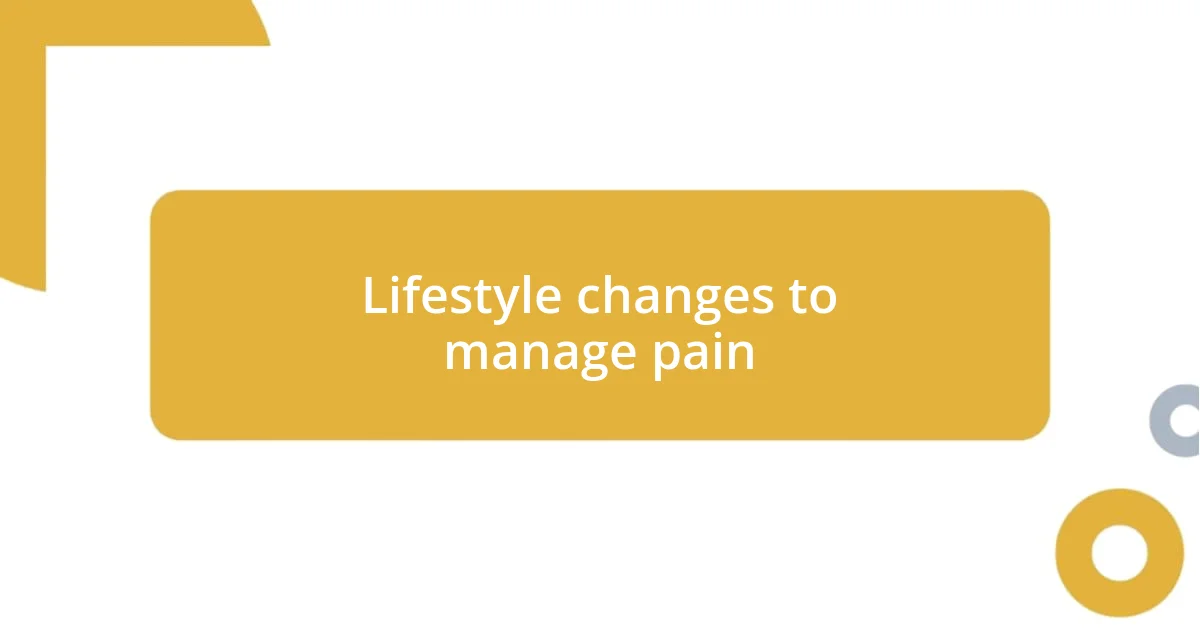
Lifestyle changes to manage pain
Making lifestyle changes can significantly contribute to managing cancer pain. One simple adjustment I made was incorporating more physical activity into my daily routine. Initially, the thought of exercise felt daunting, but I discovered that light walking or gentle stretching not only improved my mood but also lessened my pain sensitivity. Have you ever noticed how movement can unlock tension in your body? It’s fascinating how something so basic can empower us to confront discomfort.
Nutrition plays an equally vital role in pain management. I remember when I focused on a balanced diet filled with anti-inflammatory foods, such as berries, leafy greens, and nuts. The difference was tangible—I felt more energetic and found it easier to cope with pain. It’s interesting to think about how our food choices can directly impact our well-being, isn’t it? By simply nourishing my body with healthier options, I not only supported my physical healing but also elevated my emotional state.
Lastly, I learned the importance of establishing a consistent sleep pattern. During my toughest days, I was restless and uneasy, but when I prioritized sleep hygiene—such as turning off screens an hour before bed and creating a calming bedtime routine—I noticed a significant decrease in my pain levels. Have you ever felt how restorative a good night’s sleep can be? It’s remarkable how these seemingly small lifestyle adjustments can collectively lead to a more profound sense of relief and resilience in the face of pain.
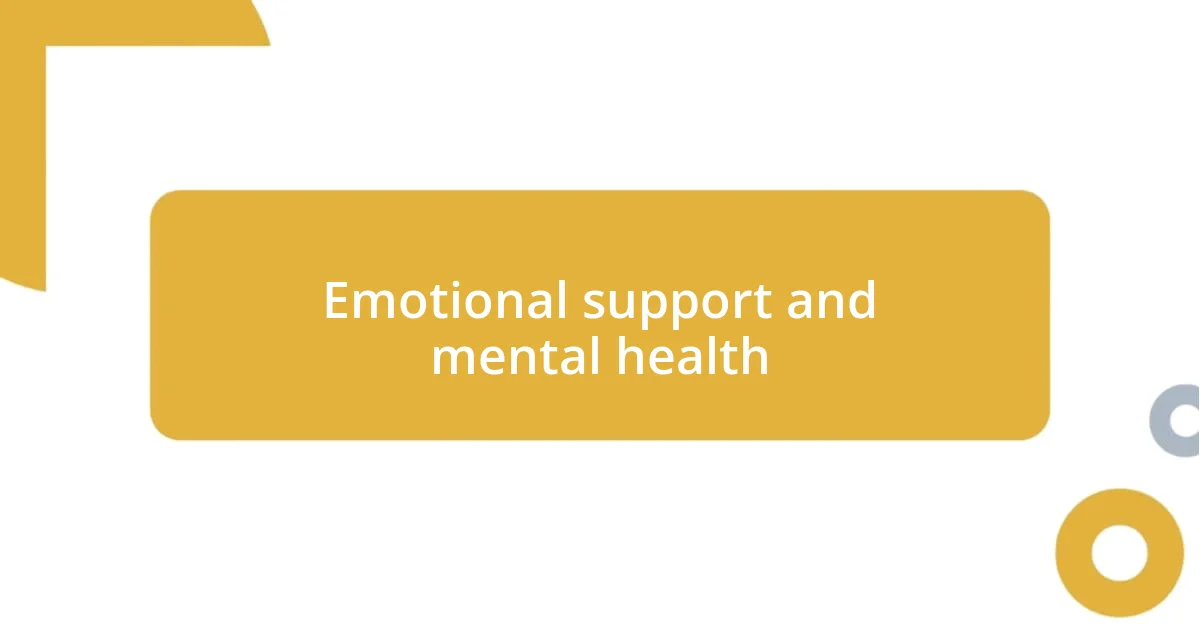
Emotional support and mental health
Finding emotional support has been a vital part of my journey in managing cancer pain. I vividly remember the day I joined a support group. Initially, I hesitated, thinking I wouldn’t find others who understood my experience. However, sharing stories with fellow patients lifted a weight off my shoulders; their empathy and kindness transformed my isolation into a sense of belonging. Have you ever experienced the power of community in tough times? It can be truly healing.
Maintaining mental health during treatment can be challenging, and I learned that it’s okay to seek professional help. After a particularly tough chemotherapy session, I decided to see a therapist who specialized in oncology. Just being able to express my fears and anxieties in a safe space made a world of difference. I felt validated and empowered, realizing that struggling with my emotions didn’t make me weak; it made me human. Reflecting on my emotions this way allowed me to face my pain with a clearer mindset.
Mindfulness has become my emotional anchor throughout this journey. I found myself practicing meditation daily, often in the early morning. Sitting in stillness, I let my thoughts drift like clouds, acknowledging their presence without judgment. This practice cultivated a sense of peace that permeated my days, even when physical pain flared up. It’s amazing how tuning into the present moment can create a shield against anxiety. Wouldn’t it be wonderful if everyone could discover this serenity amidst chaos?

